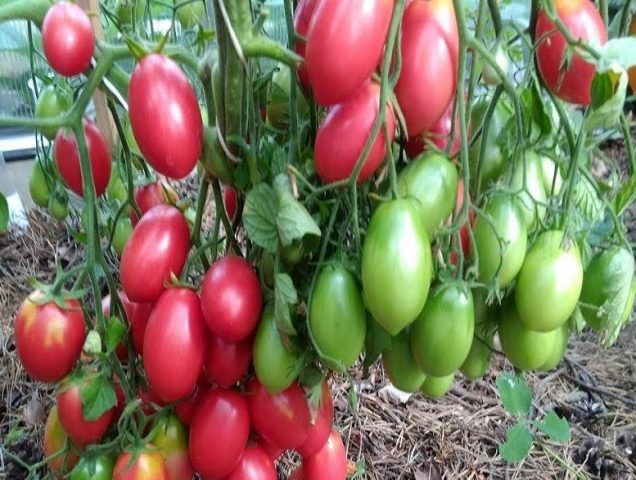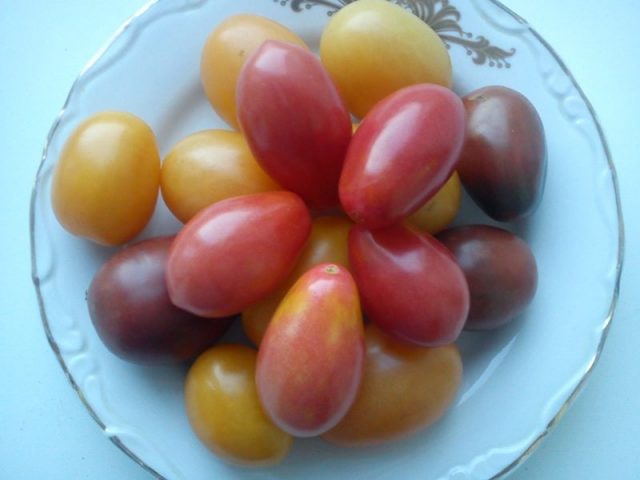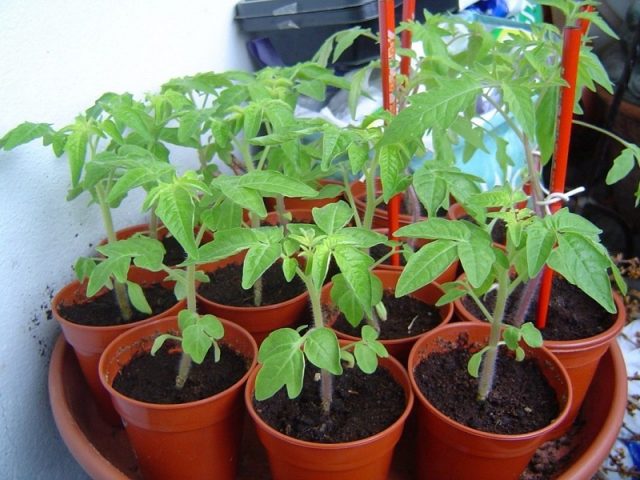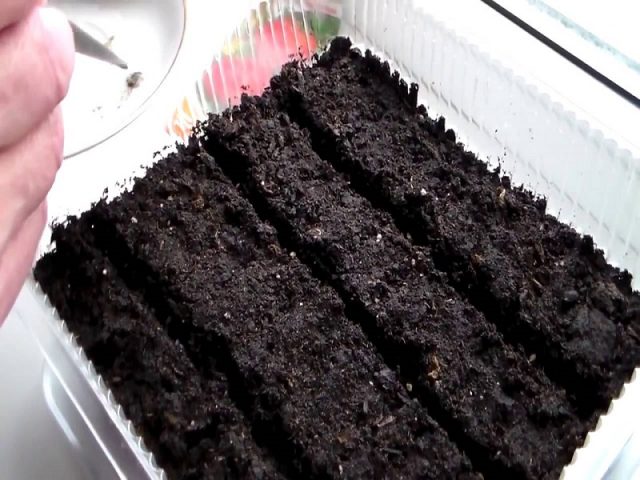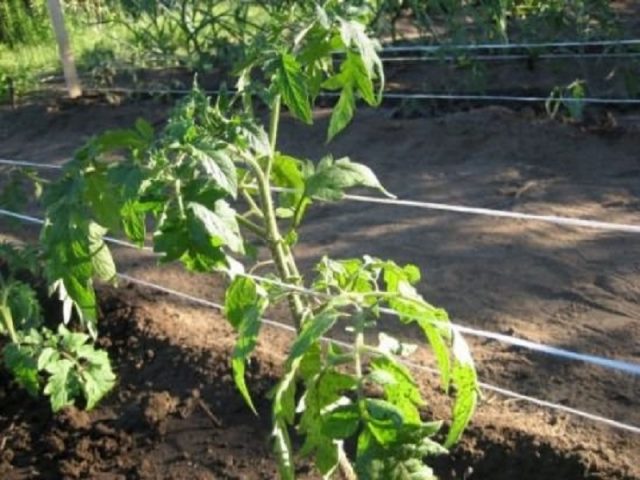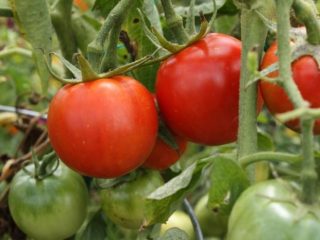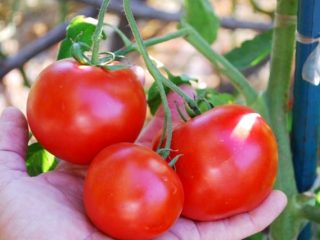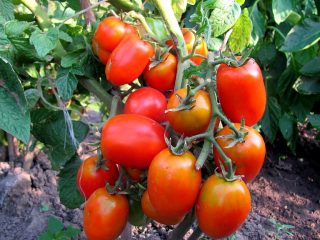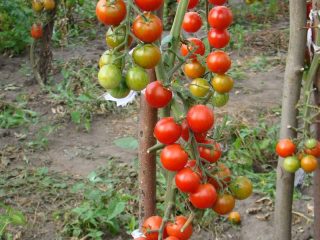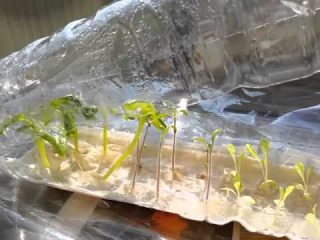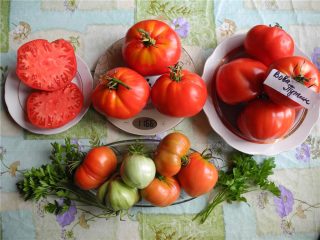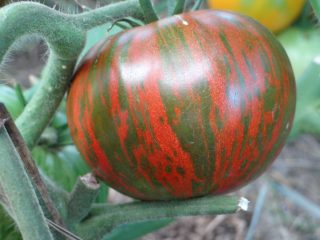Content
With all the variety of varieties bred by breeders, the Pink Snow tomato deserves special attention from gardeners. Those who have grown it at least once know how well it is suitable for cultivation in greenhouses. To evaluate the qualities of this tomato, it is worth getting acquainted with the characteristics, features of agricultural technology, advantages and disadvantages of the variety.
Description of the tomato variety Pink Snow
Tomato variety Pink Snow is a tall plant, grown both indoors and outdoors. It has a powerful branched root system. It forms and grows quickly, spreading widely with a diameter of up to 1.5 m and going to a depth of up to 1 m. In moisture conditions, roots can form directly on the stem. For this reason, its cuttings and stepsons take root easily.
The stem of the Pink Snow tomato is erect and powerful. The plant is an indeterminate plant: it is not limited in growth, therefore it requires shaping and tying to a support.
Tomato leaves are large, odd-pinnate, divided into large lobes, their color is dark green. The foliage of the bush is average.
The flowers of the plant are yellow, collected in a complex raceme, bisexual.Ovaries are formed as a result of self-pollination. Pollen is carried by the wind not far away - 0.5 m; insects do not visit tomato flowers.
The Pink Snow tomato variety is an early ripening one: the fruits ripen 80 - 90 days after germination.
Description of fruits
Depending on weather conditions, the complex inflorescence of the Pink Snow tomato variety produces up to 50 fruits, each weighing about 40 g. They are smooth, dense, and oval in shape. The color of unripe fruits is light green; when they are technically ripe, they are pink. The taste is sweet and sour, pleasant, juicy. The variety is suitable for canning, but the skin of the Pink Snow tomato is thin, so the whole form may burst during heat treatment. The variety is good for use fresh, in salads, juices, and purees.
Main characteristics
The Pink Snow tomato variety is included in the State Register of the Russian Federation with a recommendation for cultivation of private farms in open and closed ground. The originator of the variety is the specialized seed-growing enterprise Aelita-Agro.
According to the description, the characteristics of the Pink Snow tomato include its drought and heat resistance. With regular watering and fertilizing, the yield is 3.5 - 4.7 kg per plant. Tomato variety Pink Snow can be grown in open ground, subject to temporary protection during low temperatures. Plants definitely need support, although growth in open ground is somewhat less than in closed ground.
Advantages and disadvantages
The advantages of the Pink Snow tomato variety include:
- high productivity;
- resistance to temperature changes and temporary cold snaps;
- easy tolerance of stressful situations;
- excellent taste of tomatoes.
There are some disadvantages of the variety that cannot be called disadvantages:
- the need to form a bush, constant removal of stepsons;
- the difficulty of canning in its entirety due to cracking of the thin skin.
Growing rules
Agricultural technology for tomatoes of the Pink Snow variety requires compliance with a number of rules:
- Since acidic soil is most suitable for tomatoes, it is possible to use lime to increase the acidity level. You can reduce it using sulfate granules.
- The quality of seedlings must be high.
- You cannot save soil; each bush must get its own “personal space” to grow.
- Keep the soil clean by removing weeds, which choke plants and take away moisture.
- Hill up the tomatoes periodically, creating air access to the root system.
- Water correctly. Young seedlings - daily, and adult plants, especially in drought - generously, one to three times a week. Watering should be carried out strictly at the root, since the tomato really does not like moisture getting on the leaves.
- A garter to a trellis or support for a Pink Snow tomato is required, otherwise the loss of part of the harvest is inevitable.
- Periodic feeding is required with humus, ash, and a solution of chicken droppings.
- Maintaining crop rotation. The predecessors of a tomato should not be potatoes, peppers, but cabbage, pumpkin, legumes, and onions.
Sowing seeds for seedlings
Approximately 50-60 days before planting seedlings in the ground, Pink Snow tomato seeds are sown. Shoots appear in a week, so the time spent on the windowsill is about 50 days. In order not to overstay the seedlings in the house and not to deteriorate their quality, you need to decide on the sowing time:
- in the south of Russia - from late February to mid-March;
- in the center of the Russian Federation - from mid-March to April 1;
- in the northwestern regions, Siberia and the Urals - from April 1 to April 15.
The formula for calculating the exact date is as follows: count 60 days ago from the date of the last frost in a particular region.
When planting a Pink Snow tomato in a greenhouse, the sowing date can be postponed 2 weeks earlier.
Seeds require soil, which includes:
- peat – 2 parts;
- garden soil - 1 part;
- humus or compost – 1 part;
- sand – 0.5 parts;
- wood ash – 1 cup;
- urea – 10 g;
- superphosphate – 30 g;
- potassium fertilizer – 10 g.
The soil mixture must be sifted, disinfected by steaming, treatment with a solution of potassium permanganate or calcination.
Containers of different formats are suitable for sowing - cassettes, boxes, cups, pots, cache-pots, boxes that need to be disinfected. The prepared containers need to be filled with moist soil, grooves 1 cm deep should be made at a distance of 3 cm from each other, seeds should be placed there and sprinkled with soil. Cover the top with film or glass to create the proper microclimate.
For germination, a humidity of about 80% and an air temperature of -25 ⁰C are required. The best location for the boxes is near the heating system.
After the Pink Snow tomato shoots emerge, remove the film or glass cover. Seedlings require additional lighting, which must be provided for 16 hours a day by installing fluorescent lamps.
When the first true leaves appear, 8 - 10 days after germination, the seedlings should be pricked. The procedure consists of thinning the plants and replanting them, if necessary, in additional containers to provide the root system with more freedom.
Transplanting seedlings
10 - 15 days after the first picking, the seedlings should be picked a second time into larger pots or into the same container, but even further apart. Gardeners who left their reviews with photos about Pink Snow tomatoes ultimately achieved strong, stocky seedlings in this way.
Upon reaching one and a half months of age, the first flower clusters may appear on the seedlings. After 10 - 12 days it needs to be planted in a greenhouse or open ground. Overexposure of seedlings on the windowsill can lead to loss of future harvest or cessation of vegetative growth of tomato. In this case, it may remain forever in this underdeveloped form. The problem is partially solved by removing the lower flower brush.
Seedlings are of high quality if their stems are thick, the leaves are large, the roots are strong, the color is dark green and the buds are developed.
As a soil for planting, the Pink Snow tomato prefers a mixture of fertile garden soil with peat.
It is better to plant on a quiet, cloudy day; for this you need to:
- Dig the soil to the depth of a spade.
- Make ridges 1 m wide.
- Dig small holes at a distance of 45 cm in a checkerboard pattern.
- Place the plants in the holes, burying the stem 2 cm into the soil.
- Dig in and lightly press the soil around the tomato.
- Pour over warm, settled water.
If necessary, newly planted Pink Snow tomato seedlings should be shaded so that the foliage of not yet rooted plants does not get scorched.
Aftercare
After the plants reach half a meter in height, they need to start tying them up. It is good to strengthen the support, since a tall plant will completely rest on it.According to the description, the Pink Snow tomato produces clusters in which up to 50 fruits are tied, so the garter should be reliable, strong and regular as the tomato grows.
The indeterminate bush of Pink Snow must be formed into one stem, removing the stepsons in time. They are removed by breaking them out or cutting them out with a disinfected knife when they reach a length of 5 cm. The procedure is carried out at least once every two weeks.
Watering seedlings and adult plants is carried out at least three times a week, early in the morning or late in the evening. Some time after watering the tomato, the soil must be loosened and mulched. Mulch helps retain moisture and minimize weeds.
One and a half weeks after planting, fertilize: for this purpose, use a solution of chicken manure or complex universal fertilizers.
The Pink Snow tomato variety is resistant to diseases and pests, but in unfavorable weather conditions or poor agricultural practices, gray rot and late blight may occur. Treatment is carried out using special drugs according to the instructions.
Conclusion
Until recently, the Pink Snow tomato was not very popular among gardeners and gardeners. But thanks to reviews and videos on the Internet, the variety is becoming interesting to many. First of all, its yield and taste are surprising. If agricultural techniques are followed, this variety will not only give a good harvest, but will also provide aesthetic pleasure with its appearance.
